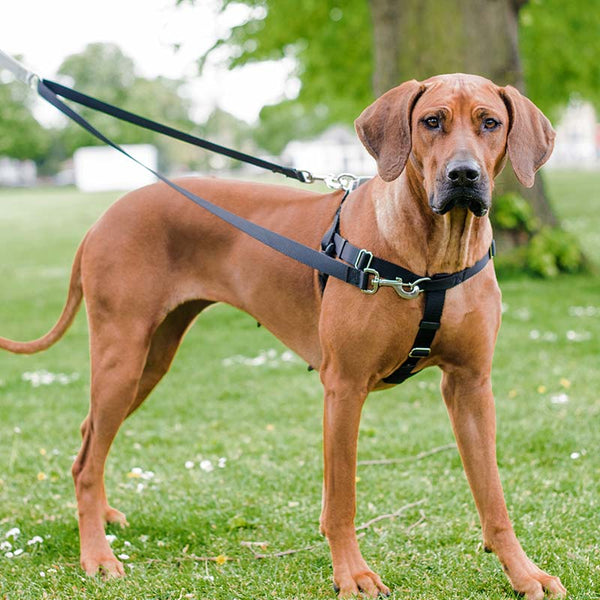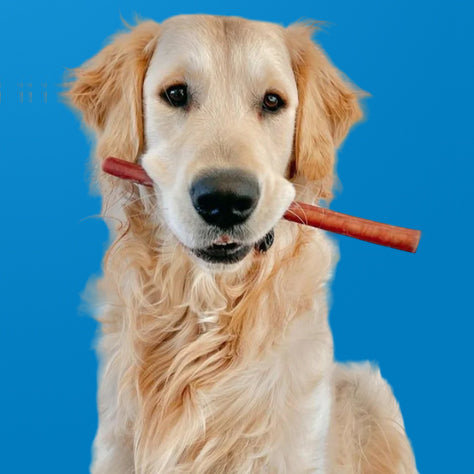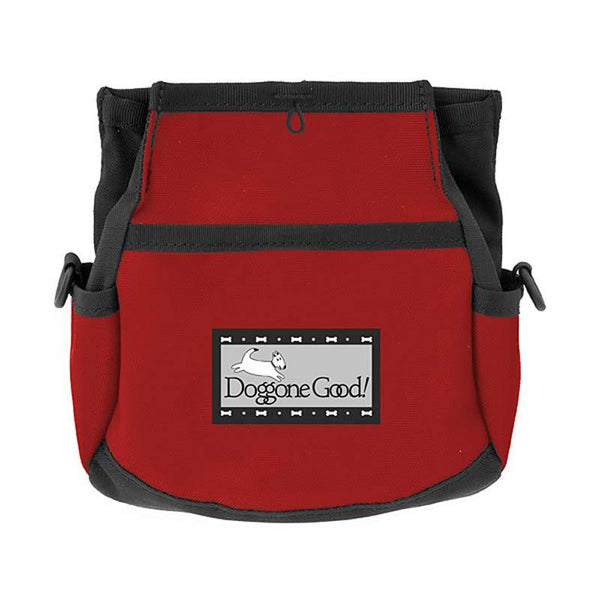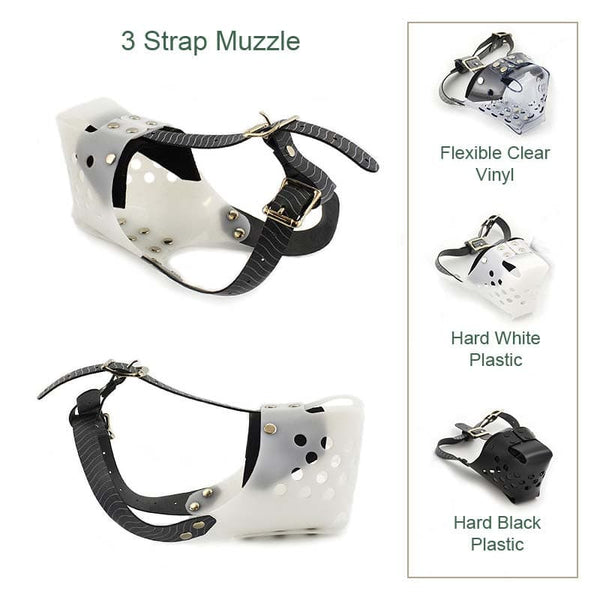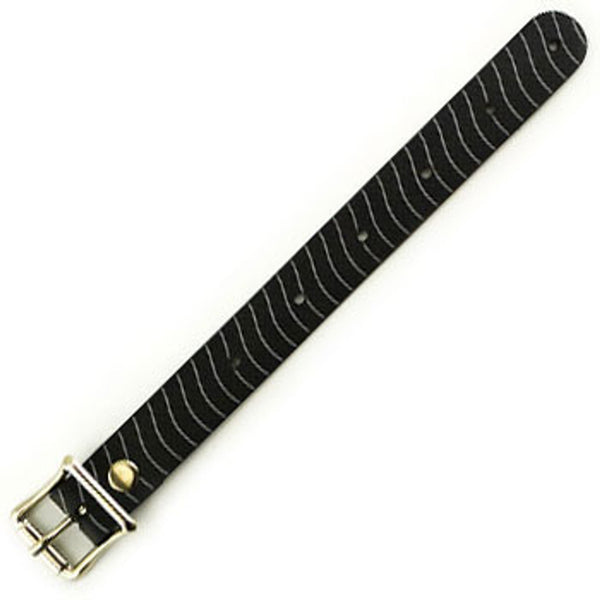Training Your Dog to Drop It and Leave It. Original Version
By Jess Rollins
Copyright Info
A Potential Life Saver "“ "Drop It"
Why teach a dog to "drop it"? If you have a young puppy, you know the answer to this - it's because they frequently have something valuable or dangerous in their mouths! The goal is that when you cue "drop it", your dog will open her mouth releasing whatever was in there and allow you to retrieve the item. It is very important to make sure your dog is making a good bargain with you for her prize (you give her a good treat) and that you stay calm and don't chase her. If this is taught correctly, your dog will be happy to hear you say "drop it". If your dog isn't happy to hear "drop it" for all items yet, then it is best keep those items out of reach until you have practiced with them. This exercise is also important because it can prevent food guarding. If your dog knows that you do not "steal" she will not worry about you approaching favorite items.
Teaching "drop it":
Get together a few items your dog might like to chew on, your clicker and some good treats like cheese or turkey. (I'm sure you now have your dog's attention!)
Have a piece of food ready in your other hand as you encourage your dog to chew on one of the objects. Once she has her mouth on it, put a piece of food close to her nose and say "drop it". Click when she opens her mouth and feed her the treat as you pick up the item with your other hand. Return the item to her.
Try to get her to pick up the object again so you can continue practicing, but beware that once your dog knows there are treats involved she may want to keep her mouth free for eating! In this case, keep your treats handy throughout the day and whenever you see her randomly pick up an object or toy you can practice. Aim for at least 10 repetitions per day. Occasionally you will not be able to give her the object back (if she's found a forbidden object), but that's okay just be sure to give her an extra nice treat.
Once you've completed about 10 repetitions, repeat the process in #2 exactly, but this time you will be sneaky and won't actually have the treat in the hand that you put close to her nose (I call this "empty fingers"). She will most likely drop the object anyway and you can click and get the treat out of your pouch. Give her the equivalent of 3 treats the first time you use empty fingers and she drops the item.
After a few days of practicing, try it with a tasty item. Get a carrot or hard chew. Hold it in your hand and offer the other side of the item to your dog to chew on - but don't let go! Let her put her mouth on it and then cue "drop it". Give her the equivalent of 3 treats the first time she does this and offer her the object again. If your dog won't retake the item, just put it away and practice another time. Get 10 reps of this before going on to step 6.
Now get your hard chew again and some really fresh treats (meat or cheese). This time you will offer the object to your dog and let go and then right away cue "drop it". When she does give her the equivalent of 10 of your extra treats and THEN give her the item to keep (this should make a very good impression!). If she doesn't release the item, try showing her your treat first and if that doesn't work, just let her have it and try again later with a lower value food-related item. You will be able to build up to the highest value items once your dog realizes it is worth her while to listen.
Practice the "drop it" with real-life objects around that she enjoys but are not allowed such as: tissues, pens (begin with an empty one), wrappers, shoes, etc. Then practice this outside!
Tips:
- If your dog already enjoys grabbing objects and getting ready for a game of chase, you should begin by teaching her that you will not chase her. Just ignore her and then she will probably drop the item on her own once she is bored of it.
- If your dog will not drop a dangerous item, even for a treat (or if you don't have one at the moment "“ shame on you!) place your fingers on the lips of her upper jaw where her canines are and push in and pull up. This will open her mouth so you can retrieve the item. Make sure you give her a big reward (even if you're frustrated) for allowing this invasive treatment and keep that item out of reach in the future until you can use it for practice
- It's okay to show her a treat (bribe her) if she has a forbidden item that is higher in value than what she has been training with. Be careful not to make a habit of this!
- Practice "drop it" during tug and fetch games.
"Leave It"
Why teach your dog to "Leave It"? The goal is to have your dog take his attention away from an object of interest when you cue "leave it". This is important when the item of interest is unsafe, such dropped medication and is also a useful self-control exercise.
- Have treats hidden in both of your fists. Let him sniff one of your fists. Click and treat (C/T) when he looks away from your fist and deliver the treat from your other hand. Repeat until he no longer tries to get the treat from your fist when you show it to him.
- Open your hand containing the treat and show him the treat, but close it if he tries to get the treat. Repeat until he decides to ignore the treat while your hand is open and then C/T by delivering the treat with your other hand. Repeat the exercise until every time you present your open decoy hand with a treat in it he is ignoring it right away. At this point, add the cue "leave it" (say this just once for each repetition of the exercise) as you display the decoy treat.
- Set the treat on the floor and cue "leave it". Cover the treat with your hand if he tries to get it. C/T when he looks away from the treat. Repeat the exercise until he doesn't try to get the treat from the floor once you say "leave it".
- Set the treat on the floor, say "leave it" and stand up. Cover it with your foot if he tries for it. C/T for ignoring the treat. Repeat.
- Walk him past the treat on leash, say "leave it" when he sees the treat and keep him from getting it with the leash. C/T when he ignores the decoy treat on the floor. Repeat.
- Next have fun and increase the length of time that he leaves it or stack treats on his paws or toss them around.
- Teach him that "leave it" also applies to objects such as toys and living things. By beginning with something very easy and building up to the more difficult.
- Use the chart to keep track of your progress.
Check when successful at "leaving it" for 8 out of 10 requests:
|
Will leave"¦ |
|
|
Low value object in your hand |
|
|
High value object in your hand |
|
|
Low and high value object, on the floor |
|
|
Low and high value object on floor with you 10 feet away |
|
|
Walk by object, on leash inside or outside |
|
|
Thrown or dropped object inside or outside |
|
|
Live subject inside or outside |
|
|
Object/subject for 1 minute or more |
|
Example objects:
Low value: Cheerio
High value: cheese cube or piece of rawhide






